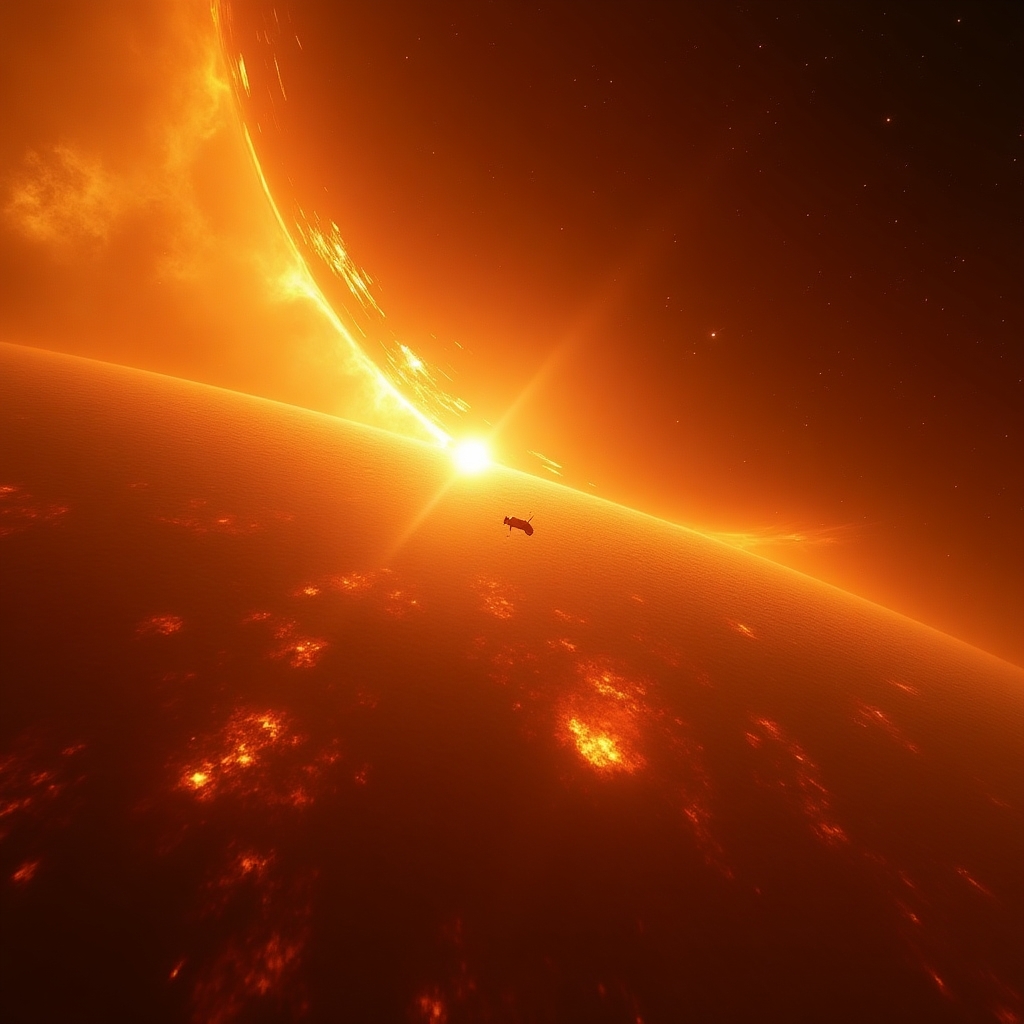In the vastness of space, one daring mission has managed to edge closer to the enigmatic core of our solar system than ever before. NASA's Parker Solar Probe has ventured with a singular ambition: to unravel the longstanding mysteries of the Sun. Among its discoveries lies a fascinating phenomenon that could reshape our understanding of solar mechanics—the helicity barrier.
iN SUMMARY
- ☀️ The Parker Solar Probe offers the first close view of the Sun's corona, solving key mysteries.
- 🔍 The newfound helicity barrier affects how solar energy converts into heat.
- 🌬️ This discovery sheds light on why solar wind protons are hotter than electrons.
- 🌌 Insights gained could apply to other cosmic plasmas beyond our solar system.
Unveiling the Solar Mysteries
The Sun has always been a captivating subject in scientific exploration. With its corona—the outermost layer of its atmosphere—boasting temperatures that can reach up to millions of degrees hotter than its surface, it was quite the cosmic riddle. How could the Sun's surface be significantly cooler compared to its surrounding atmosphere?
The Parker Solar Probe aimed to answer questions just like this. Launched in 2018, it embarked on its mission to improve our understanding of the solar atmosphere. According to a recent discovery by the mission (Science Daily, https://www.sciencedaily.com/releases/2025/08/250802022931.htm), scientists have pinpointed a key player in this heating mystery—the helicity barrier.
What is the Helicity Barrier?
Let me explain this intriguing term. Think of helicity as a twist or a spiral. In this case, it's the kind the solar magnetic field lines take as they snake through the corona. These magnetic lines affect how energy transforms into heat as they bear down on the Sun. This barrier alters the movement and heating of particles so significantly that it explains why the corona is often hundreds of times hotter than the surface below.
The Role of the Parker Solar Probe
Flying closer to the Sun than we’ve ever ventured, the Parker Solar Probe gathers data other instruments could only dream of. It dared the heated realm of the corona itself, offering insights previously unseen. Imagine collecting direct measurements of the turbulent solar atmosphere while withstanding temperatures nearly 500 times that of boiling water.
By doing so, the probe illustrates how energy in solar wind accelerates. The solar wind, a continuous stream of charged particles flowing from the sun, impacts Earth significantly, influencing space weather and satellite operations.
Why Are Solar Wind Protons Hotter Than Electrons?
For years, scientists were perplexed as to why solar wind protons carried much more heat than electrons. The helicity barrier seemingly provides an answer. As magnetic and electric fields twist and turn through the solar atmosphere, they suck energy from particles, heating protons more efficiently than electrons. Understanding these dynamics is crucial not only for examining solar phenomena but also for protecting our technology-dependent society from the impacts of space weather.
Potential Cosmic Implications
The implications stretch far beyond explaining our Sun alone. The helicity barrier concept may help comprehend how energy disperses in other cosmic plasmas across the universe. This could further be applied to distant stars and galaxies, offering a universal heating mechanism that enhances our grasp of cosmic behavior.
For those living in sunny locales like Phoenix, a peek into solar activity could become an engaging talking point when contemplating solar energy and its vast potential in everyday life.
Join the Solar Discussion
What would you do if you were part of NASA's pioneering probe team? Would you boldly venture closer to the Sun, unlocking secrets we've only just begun to uncover? Share your thoughts and insights in the comments section and become a part of the iNthacity community. Let's explore the universe together!
With each question answered, we ignite a trail towards more questions that inspire exploration. Who knows, the next groundbreaking discovery might just be waiting beyond the horizon, warming up to illuminate the curious minds of today.
Disclaimer: This article may contain affiliate links. If you click on these links and make a purchase, we may receive a commission at no additional cost to you. Our recommendations and reviews are always independent and objective, aiming to provide you with the best information and resources.
Get Exclusive Stories, Photos, Art & Offers - Subscribe Today!
























Post Comment
You must be logged in to post a comment.